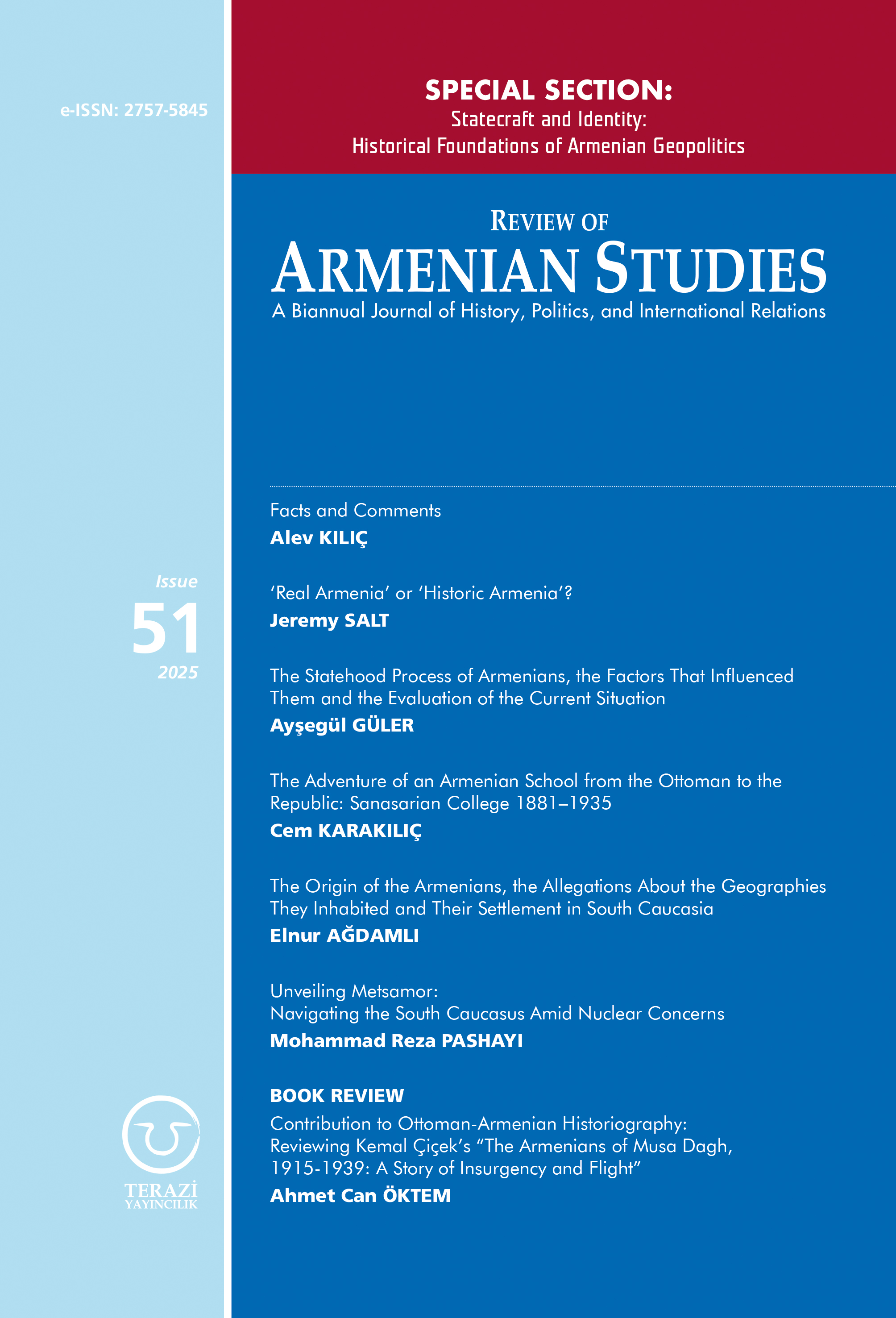Editor's Note
This 51st edition of Review of Armenian Studies arrives amid a pivotal juncture for Armenia, marked by Prime Minister Pashinyan’s contested constitutional reforms and escalating geopolitical recalibration. Domestic turbulence persists as Pashinyan’s government navigates opposition from the Armenian Apostolic Church and diaspora groups over amendments to Article 49, which seeks to redefine statehood by excising references to “historic territories”. The administration’s focus on “Real Armenia,” a pragmatic territorial and identity framework, has deepened societal fractures, with also Karabakh refugees and nationalist factions.
Economically, Armenia grapples with the fallout of its reliance on Russian gold re-exports, which collapsed from $4.9 billion in 2024 to a 59% decline by January 2025, exacerbating a 12.4% unemployment rate. Demographic pressures compound these challenges, with birth rates dropping 7.8% and deaths rising 5.4%, signaling an unsustainable population trajectory.
On the diplomatic front, Yerevan’s dual-track policy of pursuing EU accession while retaining its ties to the Eurasian Economic Union has drawn sharp Russian rebukes. Moscow’s warnings against “sitting on two chairs” contrast with Armenia’s deepening security cooperation with France, Greece, and India.. Simultaneously, Iran’s strategic partnership, exemplified by joint border maneuvers and vocal opposition to the Zangezur corridor, overshadows Yerevan’s normalization of relations with Azerbaijan and Turkiye.
The Armenia-Azerbaijan peace process remains gridlocked, with Yerevan resisting to Baku’s demanding constitutional revisions abolishing the OSCE Minsk Group. Despite international acclaim for the finalized draft treaty, insistence on Azerbaijan’s terms reveal the fragility of regional détente.
Pashinyan’s outreach to Türkiye – including unprecedented interviews with Turkish media and infrastructure assessments for the Kars-Gyumri railway – reflects a calculated gamble to diversify partnerships. Yet, Ankara’s continued alignment with Baku and diaspora backlash over his changing of the constitution, highlight the limits of this pragmatism.
These dynamics mirror the special section’s exploration of institutional legacies and constructed demographics, illustrating how Soviet-era dependencies and 19th-century migrations continue to shape Armenia’s agency in a contested Caucasus.
Building on the innovations announced in our landmark 50th edition, this 51st issue of Review of Armenian Studies introduces a Commentary Section – a platform designed for scholars to engage with emerging developments in Armenian studies through concise, evidence-driven analyses. This addition reflects RAS’s commitment to bridging rigorous historiography with contemporary geopolitical discourse, while maintaining the methodological precision that has defined our publication since its inception under Ambassador (R.) Dr. Ömer Engin Lütem’s stewardship.
The inaugural commentary, R. Assoc. Prof. Jeremy Salt’s “‘Real Armenia’ or ‘Historic Armenia’?” exemplifies this initiative’s strategic relevance. Salt dissects the precarious Armenia-Azerbaijan peace negotiations, particularly the 17-point settlement framework currently being debated. Through forensic analysis of constitutional amendments proposed by Prime Minister Pashinyan’s government, the commentary reveals how Article 49’s unresolved claim to “historic Armenian territories” perpetuates diplomatic stagnation. Salt contextualizes these legal tensions within broader regional shifts, including Armenia’s fraying alliance with Russia and Western powers’ growing mediation role.
A new special section titled “Statecraft and Identity: Historical Foundations of Armenian Geopolitics,” newly added to the 51st issue of the Journal of Armenian Studies, investigates the interplay between historical trajectories and contemporary political dynamics in Armenian state formation. Centered on institutional legacies, migration patterns, and geopolitical dependencies, the section analyzes how Armenia’s past continues to shape its modern governance challenges and regional positioning.
The first research article by Ayşegül Güler, "The Statehood Process of Armenians, the Factors That Influenced Them and the Evaluation of the Current Situation", traces Armenia’s historical inability to establish sustained sovereignty prior to 1991. The study highlights how Armenian political aspirations during the Ottoman era were often mediated through external powers, particularly Russia, which later influenced post-independence vulnerabilities. Güler argues that Armenia’s reliance on Russian patronage has perpetuated its status as the Caucasus’ "weakest link," leaving it economically stagnant and geopolitically marginalized. The analysis underscores the paradox of formal independence versus de facto dependency.
Assist. Prof. Cem Karakılıç’s article, "The Adventure of an Armenian School from the Ottoman to the Republic: Sanasarian College 1881–1935", examines how educational institutions served dual roles in late Ottoman Erzurum. Through archival analysis of financial records and administrative correspondence, Karakılıç demonstrates that Sanasarian College functioned not only as a cultural hub but also as a coordination center for Armenian separatist activities. The study reveals how the school’s 1890 closure—triggered by fiscal disputes with the Patriarchate—exacerbated communal tensions, illustrating the intersection of education, identity politics, and anti-Ottoman mobilization.
In "The Origin of the Armenians, the Allegations About the Geographies They Inhabited and Their Settlement in South Caucasia", Dr. Elnur Ağdamlı deconstructs the mythos of Armenian indigeneity in the South Caucasus. Drawing on Tsarist Russian migration records and Armenian self-identifiers (Hayk), the article documents how 19th-century mass relocations from Anatolia and Iran facilitated Russia’s creation of a "buffer zone" in today’s Armenia. Ağdamlı’s textual analysis of Russian colonial archives exposes how demographic engineering shaped modern territorial disputes, particularly with Azerbaijan.
Collectively, these studies employ primary-source methodologies to reframe Armenian geopolitics through three lenses: institutional legacies, external patronage networks, and constructed demographics. By situating contemporary challenges within historical processes, the section aligns with RAS’s mission to analyze Caucasus statecraft while maintaining scholarly rigor.
The special section’s focus on historical-political frameworks is complemented by an independent research article included in this edition: Drs. Mohammad Reza Pashayi’s “Unveiling Metsamor: Navigating the South Caucasus Amid Nuclear Concerns.” The study provides critical insights into Armenia’s contemporary geopolitical dilemmas. Pashayi analyzes the Metsamor Nuclear Power Plant, constructed during the Soviet era, as both a relic of Cold War energy policies and a modern liability. The article documents how seismic risks, radioactive leakage, and the facility’s dual-use potential for weapons-grade material exacerbate regional tensions with Azerbaijan and Türkiye.
The editorial’s examination of Armenia’s historical-political trajectory is further enriched by a critical book review featured in this edition: Independent Researcher Ahmet Can’s analysis of Kemal Çiçek’s “The Armenians of Musa Dagh, 1915–1939: A Story of Insurgency and Flight.” Can evaluates Çiçek’s meticulous deconstruction of Franz Werfel’s seminal novel The Forty Days of Musa Dagh, which romanticized Armenian resistance during World War I. By cross-referencing Ottoman administrative records, Armenian insurgent diaries, and international diplomatic correspondence, Çiçek challenges the mythologized narrative of the revolt, revealing its logistical coordination with Entente powers and the consequential Ottoman security response.
This review underscores Çiçek’s contribution to disentangling historical fact from literary fiction—a task central to RAS’s mission of rigorous scholarship. The Musa Dagh episode, often cited as symbolic of Armenian-Ottoman antagonism, is reframed through archival evidence showing how local uprisings were enmeshed in broader imperial rivalries. Can emphasizes that Çiçek’s work not only corrects populist narratives but also illuminates the complexities of wartime governance, where communal tensions intersected with Great Power machinations.
As we navigate Armenia’s “existential recalibration,” this edition reaffirms the indispensability of archival rigor and interdisciplinary inquiry. By juxtaposing demographic historiography with nuclear security challenges and historiographic revisionism, we bridge past and present, offering insights vital for policymakers and scholars alike.
We extend our gratitude to contributors whose work enriches this edition. As Türkiye and Armenia cautiously rebuild dialogue, and as regional power dynamics shift, RAS remains a steadfast platform for disentangling myth from fact. May this issue inspire continued exploration of the Caucasus’s complex tapestry, fostering pathways toward durable peace and mutual understanding.
Contents
Contributors. Review of Armenian Studies 51 (2025): 6.
Editorial Note. Review of Armenian Studies 51 (2025): 9.
Articles
Kılıç, Alev. "Facts and Comments." Review of Armenian Studies 51 (2025): 15.
Commentary Sections
Salt, Jeremy. "‘Real Armenia’ or ‘Historic Armenia’?." Review of Armenian Studies 51 (2025): 75.
Special Sections: STATECRAFT AND IDENTITY: HISTORICAL FOUNDATIONS OF ARMENIAN GEOPOLITICS
RESEARCH ARTICLE
Book Review
Ambassador (R) Alev KILIÇ graduated from the Faculty of Political Sciences of Ankara University in 1968. The next year,he joined the Ministry of Foreign Affairs of Türkiye. Kılıç served as Ambassador to F.R. of Yugoslavia between 1996 and 1998 and Ambassador/Permanent Representative to the Council of Europe in Strasbourg between 1998 and 2001. In 2001-2004, he served as the Deputy Undersecretary for Economic Affairs of the Ministry. He served as Ambassador to Switzerland (2004-2009) and Ambassador to Mexican United States (2009-2011). He retired from the Ministry in 2011. Ambassador (R) Kılıç has been the Director of Center for Eurasian Studies (AVİM) since 2013.


